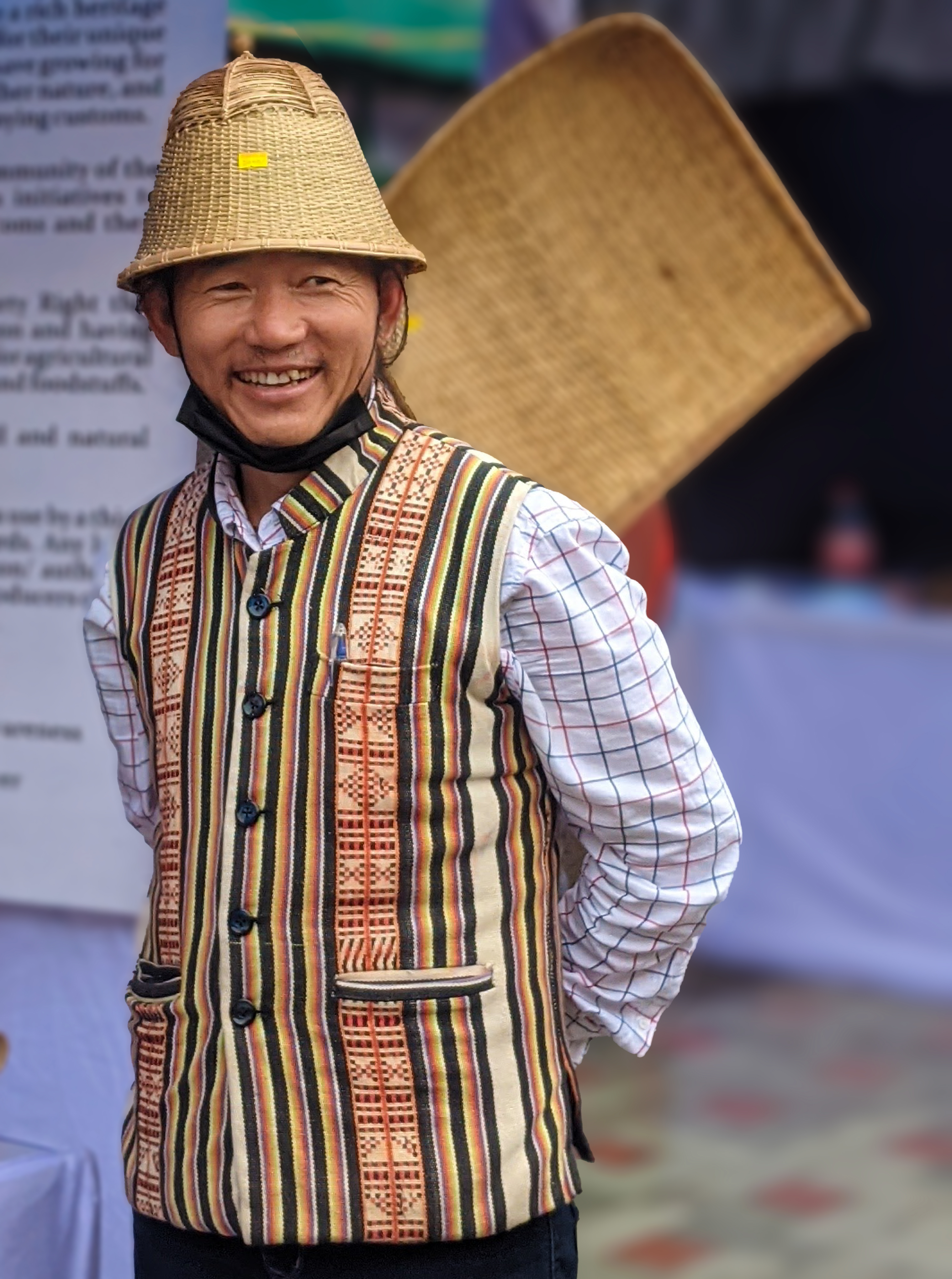For the Lepcha people of Sikkim State in India, revering nature and biodiversity is a way of life
'God is present in nature'
June 2, 2023

Through the work of the community-led Biodiversity Management Committee, Tungkyong Lake was declared Sikkim’s first Biodiversity Heritage Site – a unique and ecologically fragile ecosystem that requires special conservation efforts.
“Every plant and animal in the forest has a specific name in our local language. This way, we form a connection with nature like we do with our families and communities,” says 45-year-old Ugen Palzor Lepcha as he climbs up a patch of forest behind his village of Hee-Gyathang in the Dzongu region of Sikkim State, India.
Comprising just 0.22 percent of the India’s geographical area, Sikkim is tremendously rich in biodiversity. It is a part of the Eastern Himalayan region, one of the 12 mega biodiversity hotspots of the world. Despite its small size, the state is home to over 5,800 species of plants and 1,200 species of animals, many of them rare and endemic, found only in these parts.
The Lepchas are one of the three major Indigenous communities of Sikkim, known for their deep reverence towards nature and nature-based lifestyles.
“For us, God is present in nature. Every Lepcha clan has a mountain, a cave and a lake that they worship," Ugen explains. "Our traditional livelihoods include farming and handicrafts made from natural fibres. This region is so rich in natural resources that it provides everything for our needs, and that is why we call it 'mayal lyang', meaning ‘land blessed by the gods’.”

With UNDP support, community members completed training in harvesting and processing nettle fibre, highly prized in the export market.
In the last couple of decades, unsustainable infrastructure development and modern consumerism have affected the region negatively. “All our farm products are organic, and the handicrafts are produced in a sustainable manner. When we go to the market, the prices we get do not commensurate with the input costs, as well as the time and effort put in. Due to this, youth are leaving these professions and migrating to cities. When this happens, our connection with nature and the associated cultural practices also suffer. If the Lepcha people go away, there will be no one to protect the rich biodiversity of this region,” Ugen says.
Ugen is the executive director of Mutanchi Lom Aal Shezum, or MLAS, a community-based organization working to preserve the Lepcha way of life and the natural ecosystems that sustain it.

The Lepchas' traditional livelihoods include farming and handicrafts made from natural fibres.

Community members wash nettle fibre in a river. Their work produces high-quality nettle fibre for clothing manufacturers.
The SECURE Himalaya initiative by the Global Environment Facility, Government of India and UNDP is working with the Government of Sikkim to support communities practicing sustainable nature-based livelihoods. Partnering with organizations like MLAS, UNDP is working to enhance the economic returns the Lepcha people get from their traditional livelihoods.
One such initiative is the processing of fibre derived from Himalayan Nettle, a wild grass found abundantly in the region. The traditional methods to make the yarn take a lot of time and physical effort. The project, working with experts, has conducted field training programmes for community members on better ways to harvest nettle plants from the wild. Machines have been imported to Nepal to reduce the drudgery of manually spinning yarn from the raw fibre.
“Products made from nettle fibre have a lot of demand in the international market, and they sell at very high rates. A metre of nettle fibre cloth costs about US$20, while the same amount of cotton fibre would cost only $1, so you can imagine the economic value we could bring to the communities here if we are able to produce high-quality fibre,” says Sonam Tashi Gyaltsen, proprietor of La Designs, a boutique fashion brand from Sikkim that manufactures and exports nettle fibre products to places like London and New York. As a result of the trainings, La Designs is now being able to procure high-quality nettle fibre from the community.
Community-based management of biodiversity is another area where the project is working closely with the Lepchas of Dzongu. As a part of the project, a Biodiversity Management Committee (BMC) has been established, a village-level institution recognized by the government that encourages communities to create an inventory of all biological resources in the region so that they can be sustainably used and managed.

Ugen is executive director of Lepcha community-based organization Mutanchi Lom Aal Shezum. The name roughly translates to ‘Mother New Path Organization’.

Children play in an orange orchard. Despite climate change and other challenges, the Lepcha people look to nature for solutions.
The Hee-Gyathang BMC has prepared a Peoples’ Biodiversity Register which contains an exhaustive list of all natural, agricultural and cultural resources in the region. Through this exercise, Tungkyong Lake in the village was declared as Sikkim’s first Biodiversity Heritage Site – unique and ecologically fragile ecosystems that require special conservation efforts.
It is due to such efforts that the Khangchendzonga National Park, which includes the Dzongu region, is India’s only UNESCO World Heritage Site in the ‘mixed’ category, recognized for both its natural and cultural significance. These designations help in bringing more resources to the community for biodiversity conservation.
“'Mutanchi Lom Aal Shezum' roughly translates to ‘Mother New Path Organization’. Even as we face new challenges due to climate change and other factors, we believe that mother nature can show us the new path. If there is a forest, the Lepcha community survives. If there is a Lepcha community, then the forest also survives,” Ugen says, looking at children happily plucking fruits from orange trees.
Against all odds, the Lepchas have kept their bond with nature intact. From them, we must learn how to chart a future built on harmonious co-existence with nature.

 Locations
Locations



